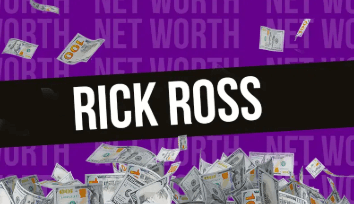From Quirky to Controversial: The Ethics and Censorship of Vanity Plates

Vanity plates are among the most visible forms of personal expression on the road. They can be funny, clever, sentimental, or thought-provoking — tiny billboards of personality attached to the back of a car. But while personalized registration numbers often bring smiles or admiration, they can also spark heated debates about free speech, social sensitivity, and the boundaries of public decency. The fine line between creativity and controversy on a license plate reveals a fascinating intersection of ethics, law, and culture.
Across the world, governments maintain strict regulations on what can and cannot appear on a vanity plate. On the surface, this may seem like a straightforward matter — authorities must prevent offensive or obscene content from appearing on public roadways. But as with any form of censorship, the details get complicated fast. What counts as “offensive”? Is a joke acceptable if only a few people understand it? And should governments even have the authority to decide what someone can display on their car?
At the heart of this issue is a tension between freedom of expression and public interest. Drivers who pay for a personalized registration number see it as a reflection of their identity. For them, it’s a harmless, creative outlet — an opportunity to inject humour or meaning into an otherwise bureaucratic system. Yet, license plates are also government-issued documents, not private property. This means that unlike bumper stickers or social media posts, vanity plates are subject to official approval and therefore public scrutiny.
The grey area between personal creativity and state control becomes most evident in the long list of rejected plates that surface every year. Some are clearly inappropriate — containing profanity, hate speech, or explicit references — while others fall into ambiguous territory. Plates like “F8THLS” (faithless), “EVLGENIUS,” or “H8GAS” have been banned in certain regions, not because they violate any clear rule, but because officials feared they might offend someone. This subjectivity has led to legal battles in several countries, with drivers arguing that their rights to self-expression have been unfairly restricted.
In the United States, for example, several court cases have challenged state-level bans on specific vanity plates. Plaintiffs have argued that license plate restrictions violate the First Amendment, particularly when the message is political or religious in nature. In Canada, similar cases have questioned whether license plate censorship is consistent with constitutional guarantees of free speech. The results vary, but the broader trend suggests growing public awareness that what we choose to display — even on something as small as a metal plate — matters deeply in defining who we are and what society allows us to say.
At the same time, regulators have valid concerns. License plates are visible to all — including children — and displayed on public roads where civility and neutrality are expected. Governments are responsible for ensuring that public symbols don’t promote hate, discrimination, or obscenity. This balancing act between personal liberty and collective standards mirrors broader societal debates about speech in public spaces. The road, in this case, becomes a literal arena for negotiating social norms.
Companies like Regplates navigate this complex terrain daily. While they help individuals secure personalized registration numbers, they also operate within the boundaries set by vehicle authorities. Their role isn’t just administrative — it’s interpretive. They must understand what kinds of messages will likely be approved or rejected and help customers find creative, compliant alternatives. This dynamic demonstrates how the business of personalization inevitably interacts with systems of regulation and ethics.
See also: Spank Horton Ex Wife: The Life of the Former NFL Player and His Ex-Wife
Interestingly, censorship standards can vary dramatically between countries, and even between regions within the same nation. What one community finds humorous, another might find offensive. Cultural context shapes how words, acronyms, and even numbers are perceived. A phrase that’s innocent in one language might be vulgar in another. For instance, certain combinations of letters that resemble curse words in English have been banned in multilingual regions, even when the intent was harmless. The result is an ever-evolving list of forbidden plates that mirrors shifting cultural sensitivities.
Beyond censorship, there’s also a moral question: should individuals want to provoke, shock, or offend through their license plates? While some people see controversy as a form of artistic or social expression, others view it as unnecessary attention-seeking in a shared public space. The ethics of vanity plates ultimately depend on intent. A witty pun or pop culture reference can make people smile, but a crude insult or discriminatory message contributes to a more hostile environment. The challenge lies in distinguishing one from the other.
In the digital age, where everyone is increasingly conscious of image and expression, the license plate remains one of the few regulated forms of personal messaging. It’s both public and personal — a statement that travels through society, visible to strangers who can’t respond. As long as this remains true, the debate over what should and shouldn’t be allowed on vanity plates will continue. It’s not merely about words and symbols, but about the ongoing struggle to balance individuality with respect for the shared spaces we all inhabit.
In the end, the ethics and censorship of vanity plates tell us something profound about society itself: that even the smallest expressions of identity are never truly isolated. They exist in a network of meanings, responsibilities, and reactions — a reminder that freedom, on or off the road, always comes with boundaries.






